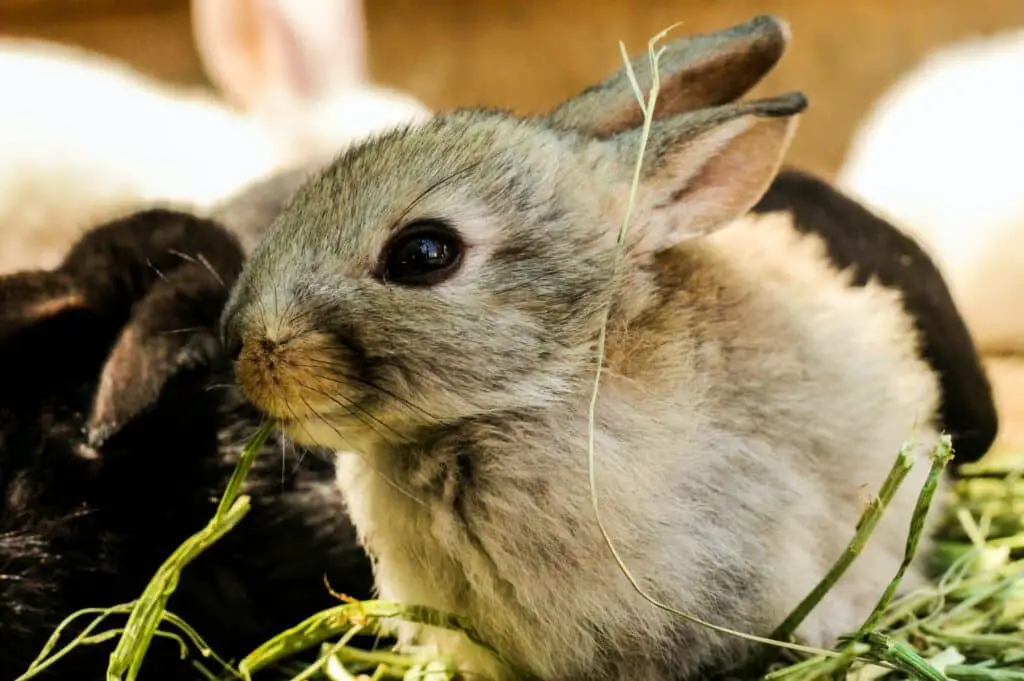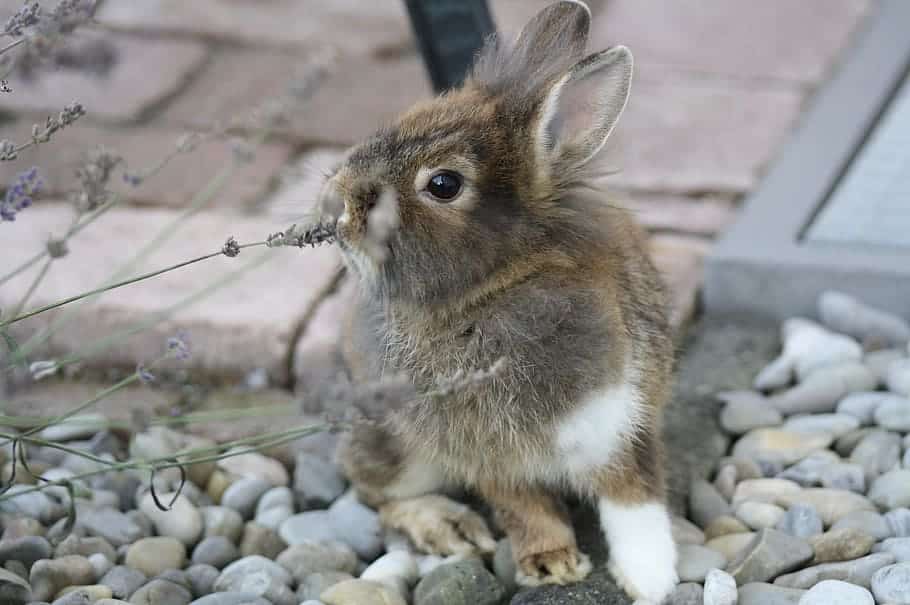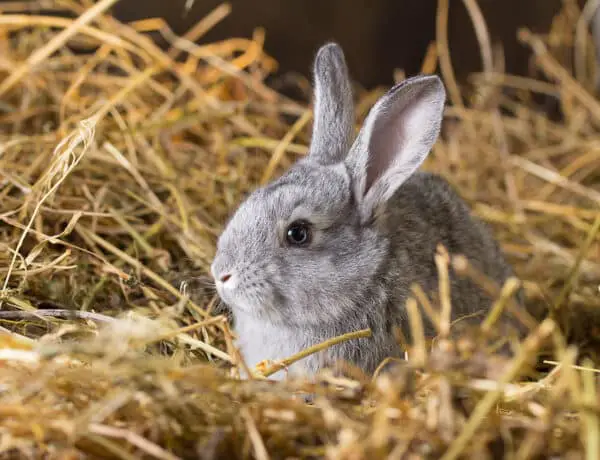Introduction
Is Rabbit A Rodent: The question of whether a rabbit is a rodent is a common source of confusion among many people. While rabbits and rodents share some similarities in their physical appearance and behavior, they actually belong to different taxonomic groups within the animal kingdom. In this exploration, we will delve into the classification of rabbits and rodents, highlighting the key distinctions that set them apart and shedding light on their unique characteristics. By the end of this discussion, you will have a clear understanding of why rabbits are not considered rodents and will appreciate the fascinating diversity of the animal world. The confusion surrounding the classification of rabbits as rodents stems from their shared traits, such as their small size, herbivorous diet, and prolific breeding habits. Additionally, both rabbits and rodents often inhabit similar environments, making it easy to see why people might mistake them for belonging to the same category.
However, a closer examination of their biological characteristics and evolutionary history reveals the distinct differences between these two groups. Rabbits holes belong to the order Lagomorpha, which includes hares and pikas as well. In contrast, rodents are classified under the order Rodentia, which is a diverse group encompassing animals like mice, rats, squirrels, and beavers. One of the primary distinctions lies in their dental structure: rabbits possess two pairs of continuously growing incisor teeth, while rodents have a single pair of ever-growing incisors. This dental disparity represents a fundamental difference in their evolutionary lineage. Furthermore, rabbits and rodents diverge in terms of their digestive systems and behavior.
Rabbits have a specialized digestive system that includes a cecum where cellulose-rich food is fermented with the help of beneficial bacteria. Rodents, on the other hand, lack this cecum and have a simpler digestive tract. In this exploration, we will delve deeper into these differences, exploring the unique characteristics and evolutionary adaptations that make rabbits distinct from rodents. By the end of our journey, you will have a comprehensive understanding of the fascinating world of lagomorphs and rodents and why rabbits are indeed not classified as rodents despite their superficial similarities. To further clarify the distinction between rabbits and rodents, it’s essential to consider their reproductive and social behaviors. Rabbits are known for their prolific breeding habits, with a relatively short gestation period and the ability to produce multiple litters in a single year. They are also more likely to live in burrows or warrens and engage in social behaviors, often forming groups or colonies for protection.

Why are rabbits called rodents?
Confusion between rabbits and rodents stems partly from history – and partly from their superficial similarities to rodents. Until early in the 20th century, the rabbit and other lagomorphs were classified under Rodentia (rodents), which includes squirrels, rats, marmots and mice.
Rabbits are not called rodents; rather, they are often mistakenly associated with rodents due to certain similarities in their physical appearance and behaviors. This common misconception arises from a lack of understanding of the distinct biological classifications and evolutionary histories of these two groups of animals.
Rabbits belong to the order Lagomorpha, which includes hares and pikas as well. In contrast, rodents are classified under the order Rodentia, which encompasses a diverse array of animals such as mice, rats, squirrels, and beavers. The primary distinction between these two orders lies in their dental structure.
Rabbits possess two pairs of continuously growing incisors, one behind the other. These incisors are specially adapted for gnawing and grinding plant material, reflecting their herbivorous diet. In contrast, rodents have a single pair of ever-growing incisors that are adapted for various functions, including gnawing, digging, and defense.
The confusion surrounding rabbits being called rodents may also stem from their shared behaviors, such as their prolific breeding habits, herbivorous diet, and the tendency to live in burrows or warrens. However, these similarities are the result of convergent evolution, where unrelated species develop similar traits in response to similar environmental challenges.
Is rat a family of rabbit?
Although rabbits and hares have long been classified as close relatives of rodents (mice, rats, squirrels), a new study has concluded that the long-eared hoppers are really more closely related to primates, the mammalian order that includes monkeys, apes and humans.
No, a rat is not a member of the same family as a rabbit. Rats and rabbits belong to entirely different families within the animal kingdom, and they are not closely related in terms of taxonomy or evolutionary history.
Rats are rodents, and they belong to the family Muridae, which includes various species of rats and mice. They are characterized by their single pair of continuously growing incisors and are part of the order Rodentia, which encompasses a wide variety of rodent species.
Rabbits, on the other hand, are not rodents. They belong to the family Leporidae within the order Lagomorpha, which includes hares and pikas as well. Rabbits are distinguished by their unique dental structure, which comprises two pairs of continuously growing incisors. This dental characteristic, along with other biological differences, sets them apart from rodents.
While rats and rabbits may share some similarities in terms of being small mammals and herbivores, they have distinct evolutionary lineages and belong to separate taxonomic groups. They are not part of the same family or even the same order within the animal kingdom.
Is rabbit and rat same?
Rabbits are NOT rodents like mice, rats, and degus. They are in fact lagomorphs. Lagomorphs are more strictly herbivorous, and many rodents will eat meat and vegetables.
Rabbits belong to the order Lagomorpha and the family Leporidae, which includes hares and pikas as well. They are known for their specialized dental structure, with two pairs of continuously growing incisors. Rats, on the other hand, belong to the order Rodentia and the family Muridae. They have a single pair of continuously growing incisors.
One of the most significant distinctions is their dental anatomy. Rabbits have four incisor teeth (two on the top and two on the bottom), while rats have two incisors (one on the top and one on the bottom). The dental differences reflect their dietary adaptations and evolutionary histories.
Rabbits are known for their herbivorous diet, feeding on a variety of plant materials, including grasses and leaves. They are often associated with burrow-dwelling and social behaviors, living in colonies and forming intricate underground warrens. Rats, on the other hand, are omnivorous and opportunistic feeders. They can consume both plant and animal matter and are often considered scavengers. Rats exhibit a wide range of behaviors, from solitary to highly social, depending on the species.
Why rabbits are not rodent?
Which small mammals are (not) rodents and what does that mean …
Rabbits do not belong to the Rodentia order, they are lagomorphs (Lagomorpha order). This is because a rabbit has four incisors in the upper jaw (including two non-functional teeth), while rodents only have two.
One of the most significant differences between rabbits and rodents is their dental structure. Rabbits have two pairs of continuously growing incisors, one behind the other, for a total of four incisors. This unique dental feature is adapted for gnawing and grinding plant material, as rabbits are herbivores. In contrast, rodents have a single pair of continuously growing incisors, one on the top and one on the bottom, which they use for various functions like gnawing, digging, and defense.
Rabbits and rodents have followed separate evolutionary paths for millions of years. They have distinct ancestors and evolved in response to different ecological challenges, resulting in unique adaptations and behaviors.
While both rabbits and rodents exhibit a wide range of behaviors, they also display notable differences. Rabbits, for example, are known for their social behavior and often live in colonies, while many rodents, such as rats, can be both solitary and social, depending on the species.
What makes an animal a rodent?
Rodents are mammals characterized by upper and lower pairs of ever-growing rootless incisor teeth. Rodents are the largest group of mammals, constituting almost half of the class Mammalia’s approximately 4,660 species. This is a list of selected rodents, arranged alphabetically by suborder and family.
The most defining feature of rodents is their dental structure. They possess a single pair of continuously growing incisor teeth in both the upper and lower jaws. These ever-growing incisors have enamel on the front and are continuously worn down through gnawing and grinding. The presence of these specialized incisors is a hallmark of all rodents and sets them apart from other mammals.
The majority of rodents are herbivorous, meaning they primarily feed on plant materials. Their continuously growing incisors are adapted for efficiently gnawing and processing a wide range of plant matter, including leaves, stems, seeds, fruits, and roots. Some rodents are opportunistic and may include insects or other small animals in their diet.
Rodents comprise one of the largest and most diverse orders of mammals, with over 2,200 recognized species. This diversity includes animals like mice, rats, squirrels, beavers, guinea pigs, and capybaras, among others. Rodents can be found on every continent except Antarctica and inhabit a variety of environments, from forests to deserts to urban areas.
Rodents are known for their reproductive prowess. They typically have short gestation periods and produce multiple litters of offspring throughout the year. This high reproductive rate is a key factor contributing to their success as a group.
What is a rabbit called?
A bunny and a rabbit really are just two names for the same animal. ‘Rabbit’ is the recognized name for over 20 related species in the same Genus. ‘Bunny’ is simply a colloquial term used for the same species, especially when talking about a small or young rabbit. A hare is a completely different species from a rabbit.
“Rabbit” is the most generic and widely used term to describe these small mammals. It encompasses various species within the order Lagomorpha. Domestic rabbits, which are often kept as pets, are usually simply referred to as “rabbits.” Wild rabbits are also commonly known by this name.
“Bunny” is an affectionate or diminutive term for a young rabbit, often used when referring to baby rabbits. People often use “bunny” to describe young domestic rabbits or to convey a sense of cuteness and endearment. However, it’s important to note that “bunny” can also be used to refer to adult rabbits in a playful or informal context.
While hares are closely related to rabbits and belong to the same order (Lagomorpha), they are a distinct group. Hares tend to be larger than rabbits and have different ecological roles and behaviors. In everyday language, people often use “hare” to refer specifically to species like the European hare or the snowshoe hare. Hares are known for their long, powerful hind legs and adaptability to various habitats.
Are bats rodents?
Contrary to popular belief, bats are not rodents. They’re not even closely related. Research suggests bats are related to primates such as monkeys, apes, and yes, even humans.
Bats belong to the order Chiroptera, while rodents are classified under the order Rodentia. These orders represent two entirely different branches of the mammalian evolutionary tree. Taxonomic classifications are based on shared ancestry and distinct evolutionary lineages, and bats and rodents are not closely related in this regard.
One of the most significant differences between bats and rodents is their skeletal structure. Bats have wings, which are elongated forelimbs covered by a thin membrane of skin, allowing them to fly. Rodents, on the other hand, have a more typical mammalian limb structure with claws or hooves. This anatomical difference is a fundamental characteristic that sets bats apart from rodents.
Bats are primarily insectivorous or frugivorous, while some species are even herbivorous, feeding on nectar or fruit. In contrast, rodents are primarily herbivores, with a few species being omnivorous or carnivorous. Their dietary habits and adaptations are distinct.
Bats have a different dental structure compared to rodents. They have a varied range of teeth adapted for their specific diets and lifestyles. In contrast, rodents have a characteristic set of continuously growing incisors, which is one of the defining features of the order Rodentia.
Is rabbit afraid of rat?
Rats will sneak into a rabbit’s enclosure and steal leftover rabbit food, and slip away without trouble. Rabbits are quite docile, and won’t be bothered by the rat eating its food. However, a territorial rabbit may try to scare the rat off, resulting in a fight. Most animals would rather flee than fight.
Rabbits are prey animals, and they have evolved with a strong instinct to be cautious and alert in the presence of potential predators. Rats, being omnivorous scavengers, might not be perceived as direct predators by rabbits, but their presence could still trigger a cautious response.
A rabbit’s response to rats can be influenced by its socialization experiences. If a rabbit has been raised or socialized around other animals, including rats, it may be more tolerant or less fearful of their presence.
Like humans and other animals, rabbits have individual personalities. Some rabbits may be naturally more skittish or anxious, while others might be more curious and adaptable. This can affect how they react to the presence of rats or any other unfamiliar animals.
Over time, rabbits that are exposed to rats or other animals in a controlled and non-threatening environment may become accustomed to their presence and become less fearful.

Conclusion
While rabbits and rodents may share some superficial similarities, such as their small size, herbivorous diets, and prolific reproductive habits, they belong to distinct orders within the animal kingdom. Rabbits are classified under the order Lagomorpha, which includes hares and pikas as well. They are characterized by their specialized dental structure, two pairs of continuously growing incisors, as well as their unique digestive system, social behaviors, and reproductive strategies. In contrast, rodents fall under the order Rodentia, a diverse group comprising animals like mice, rats, squirrels, and beavers. Their dental structure consists of a single pair of ever-growing incisors, and they exhibit a wide range of behaviors and adaptations to their specific ecological niches. The differences between rabbits rodents go beyond mere appearances, reflecting their distinct evolutionary lineages and adaptations to different ecological roles. While both groups have successfully adapted to various environments around the world, they remain separate and independently classified categories within the animal kingdom.
This exploration into the classification of rabbits and rodents serves as a reminder of the intricate diversity and complexity of the natural world. It underscores the importance of taxonomy in our understanding of the relationships among different species and highlights the fascinating range of adaptations that have evolved in response to diverse environmental challenges. Ultimately, rabbits are not rodents, and recognizing this distinction enhances our appreciation for the rich tapestry of life on Earth. The differentiation between rabbits and rodents extends beyond their scientific classifications; it also encompasses their ecological roles and evolutionary histories. Rabbits, with their specialized digestive systems and social behaviors, have evolved to fill specific niches in various ecosystems, often as prey animals and burrow-dwelling herbivores. They contribute to ecosystem dynamics by shaping vegetation through grazing and creating sheltered environments within their burrows.
Rodents, on the other hand, exhibit a remarkable diversity of lifestyles and ecological functions. Some rodents serve as important seed dispersers, while others play vital roles in nutrient cycling or as predators of insects and other small creatures. Their adaptability and success in various environments have made them one of the most diverse and abundant mammalian orders on the planet. In our exploration of whether a rabbit is a rodent, we have not only clarified their distinct classifications but also gained a deeper appreciation for the complex web of life on Earth. Nature’s diversity is a testament to the countless ways in which species have evolved to survive and thrive in different environments. Understanding these distinctions not only enriches our scientific knowledge but also deepens our awe and respect for the wonders of the natural world.





No Comments